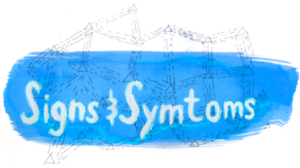 Do you know the difference between signs and symptoms? Here’s a little lesson from nursing school: signs are what others look for (such as behavior changes or things you can see) and symptoms are what you experience (such as shakiness, headache, or things that you feel).
Do you know the difference between signs and symptoms? Here’s a little lesson from nursing school: signs are what others look for (such as behavior changes or things you can see) and symptoms are what you experience (such as shakiness, headache, or things that you feel).
The signs and symptoms of diabetes may depend on the type of diabetes. Typically people who have type 1 diabetes experience extreme (“unquenchable”) thirst, frequent urination (peeing a lot), and may have very little energy. These are symptoms. They often lose weight or stop growing, which is a sign. Kids (and even adults, sometimes) with undiagnosed type 1 diabetes may wet their bed (another sign).
In type 2 diabetes, we see central obesity (extra weight in the abdomen, or the “apple shape”), which is a sign. People with type 2 often complain of blurry vision and fatigue (symptoms). The hard part about type 2, however, is that some people get the signs/symptoms typically associated with type 1 diabetes (see above) and many people don’t experience any symptoms at all. In fact, type 2 diabetes is often detected on a routine blood draw, for instance, as part of a life insurance physical. If left undetected, people with type 2 sometimes get complications including dental problems, foot problems, sores that don’t heal, and infections.
If you or someone you know has any of these signs or symptoms, please let your health care provider know. It is far better to know that you have diabetes – and do something about it – than to live with high blood glucose levels that could be damaging your body.
What other signs/symptoms have you experienced, or been told about, that I haven’t mentioned?
